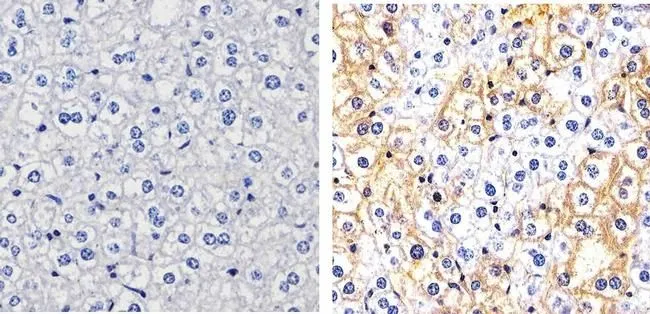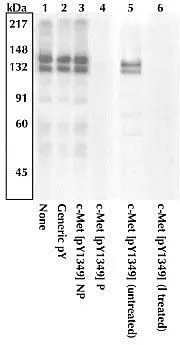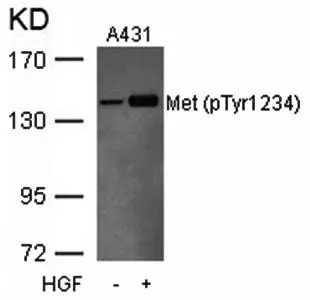c-Met antibody
GTX10728
ApplicationsFlow Cytometry, Western Blot, ImmunoHistoChemistry, Neutralisation/Blocking
Product group Antibodies
TargetMET
Overview
- SupplierGeneTex
- Product Namec-Met antibody
- Delivery Days Customer9
- Application Supplier NoteWB: 0.1-0.2 microg/ml. IHC: 5-15 microg/ml. Neutralizing/Inhibition: 0.5-2 microg/ml. *Optimal dilutions/concentrations should be determined by the researcher.Not tested in other applications.
- ApplicationsFlow Cytometry, Western Blot, ImmunoHistoChemistry, Neutralisation/Blocking
- CertificationResearch Use Only
- ClonalityPolyclonal
- ConjugateUnconjugated
- Gene ID4233
- Target nameMET
- Target descriptionMET proto-oncogene, receptor tyrosine kinase
- Target synonymsAUTS9, DA11, DFNB97, HGFR, RCCP2, c-Met, hepatocyte growth factor receptor, HGF receptor, HGF/SF receptor, SF receptor, proto-oncogene c-Met, scatter factor receptor, tyrosine-protein kinase Met
- HostGoat
- IsotypeIgG
- Protein IDP08581
- Protein NameHepatocyte growth factor receptor
- Scientific Descriptionc Met, a member of the tyrosine kinase superfamily, is the receptor for hepatocyte growth factor, also known as scatter factor (HGF/SF). The mature c Met protein is a disulfide-linked heterodimer with Mr=190 kDa composed of a heavily glycosylated alpha subunit that is completely extracellular in localization, and a beta subunit comprised of an extracellular ligand binding domain, a single transmembrane domain, and a cytoplasmic tyrosine kinase domain. Cells expressing c Met include epithelial cells, endothelial cells, blood cells of various types, and glomerular mesenchymal cells.HGF/SF binding to c Met stimulates receptor dimerization and the phosphorylation of numerous residues within the receptor x0019_s cytoplasmic domain. Signaling proteins that are phosphorylated and/or localized in response to c Met phosphorylation include: Grb2, Shc, Cbl, Crk, cortactin, paxillin, GAB1, PI3K, FAK, Src, Ras, ERK1 and 2, JNK, PLC gamma, AKT, and STAT3. HGF/SF stimulation of c Met expressing cells enhances proliferation, migration, morphogenesis, and protease synthesis, characteristics that are associated with invasive cell phenotype. Many types of cancer exhibit sustained c Met stimulation, overexpression, or mutation, including carcinomas of the colon, breast, ovary, lung, liver, prostate, thyroid, kidney, as well as melanomas and sarcomas. In addition to cancer studies, other research areas in which c Met is under investigation include organogenesis, organ regeneration, angiogenesis and surgical wound healing.The detection limit in immunoblotting for recombinant human HGF R is approximately 5 ng/lane under non-reducing and reducing conditions. Both the alpha and beta chains of HGF R are detected by this antibody under reducing conditions. The detection limit in ELISA for recombinant human HGF R is approximately 0.16 ng/well.
- Storage Instruction-20°C or -80°C,2°C to 8°C
- UNSPSC12352203




![WB analysis of various samples using GTX14700 c-Met antibody [3i20(25H2)]. Lane 1 : mIMCD3 Lane 2 : Vero Lane 3 : 293 (HGF stimulated) Lane 4 : 293 (starved) Lane 5 : C6](https://www.genetex.com/upload/website/prouct_img/normal/GTX14700/GTX14700_20191203_WB_46_w_23060620_293.webp)


